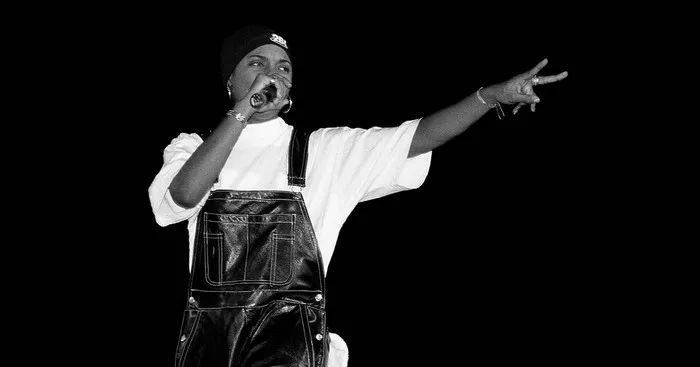In the vast and ever-evolving landscape of music, two genres stand out prominently: pop music and hip hop. While both have achieved global recognition and immense popularity, they possess distinct characteristics that set them apart. Understanding these disparities is crucial for appreciating the diversity within the music industry and the cultural significance each genre carries. In this article, we delve into the essence of pop music and hip hop, dissecting their origins, stylistic elements, cultural influences, and impact on society.
Origins and Evolution
Pop music, short for “popular music,” encompasses a broad spectrum of styles characterized by mass appeal and accessibility. Its roots can be traced back to the early 20th century, with the emergence of genres like jazz, blues, and rock and roll. As technology advanced, pop music became synonymous with radio-friendly tunes, catchy melodies, and simple yet memorable lyrics. Throughout the decades, pop music has continually evolved, incorporating elements from various genres and adapting to changing musical trends.
On the other hand, hip hop originated in the late 1970s within the African American and Latino communities of New York City. Born out of the urban landscape, hip hop served as a form of expression for marginalized voices, addressing social issues such as poverty, racism, and inequality. Its four foundational elements—MCing (rapping), DJing, graffiti art, and breakdancing—reflected the creativity and resilience of inner-city youth. Hip hop’s evolution has been marked by innovation and experimentation, leading to the emergence of subgenres like gangsta rap, conscious hip hop, and trap music.
Stylistic Elements
One of the primary distinctions between pop music and hip hop lies in their stylistic elements. Pop music tends to prioritize melodic hooks, infectious rhythms, and polished production. Songs are often structured around a catchy chorus, with verses that narrate a story or convey a particular emotion. Pop artists often collaborate with songwriters, producers, and choreographers to create a cohesive and commercially appealing product. The emphasis on relatable themes and universal experiences ensures that pop music resonates with a broad audience.
In contrast, hip hop places a greater emphasis on lyrical prowess, rhythmic flow, and beat-driven production. The backbone of hip hop is the MC or rapper, whose skill in delivering intricate rhymes and wordplay is central to the genre’s identity. Hip hop beats, typically characterized by drum machine patterns and sampled loops, provide a backdrop for the artist’s lyrical expression. While melodies are present in hip hop, they often take a backseat to the rhythmic cadence and verbal dexterity of the MC. Additionally, hip hop’s embrace of sampling and remixing allows artists to pay homage to their musical predecessors while adding their own creative spin.
Cultural Influences
Beyond their musical characteristics, pop music and hip hop are deeply intertwined with cultural influences that shape their identities. Pop music, with its mainstream appeal and global reach, reflects the cultural zeitgeist of the times. It serves as a mirror to society, capturing prevailing attitudes, trends, and values. Pop artists often use their platform to address social issues or promote messages of empowerment and inclusivity. Moreover, pop music’s crossover appeal allows it to transcend geographical and linguistic barriers, becoming a unifying force in an increasingly interconnected world.
Hip hop, rooted in the socio-economic realities of urban America, serves as a voice for marginalized communities and a catalyst for social change. From its early days in the Bronx to its global proliferation, hip hop has retained its authenticity and streetwise ethos. The genre’s emphasis on storytelling and personal narrative allows artists to shed light on the struggles and triumphs of everyday life. Moreover, hip hop’s influence extends beyond music to encompass fashion, language, and visual arts, shaping youth culture and mainstream trends.
Impact on Society
Both pop music and hip hop wield significant influence on society, albeit in different ways. Pop music’s ubiquity and commercial success make it a powerful tool for shaping public opinion and influencing consumer behavior. Advertisers often leverage pop songs and celebrity endorsements to promote products and appeal to target demographics. Furthermore, pop music’s ability to evoke emotions and create shared experiences fosters a sense of community and collective identity among listeners.
Hip hop, with its roots in resistance and resilience, has a more overtly political and social impact. Through its lyrics and imagery, hip hop confronts issues of racism, police brutality, economic inequality, and systemic injustice. Artists use their platform to amplify marginalized voices and challenge the status quo, sparking dialogue and mobilizing communities for change. Hip hop’s influence extends beyond the music industry to politics, activism, and academia, making it a potent force for social transformation.
Conclusion
In conclusion, while pop music and hip hop share certain similarities, they are distinct genres with unique histories, stylistic elements, cultural influences, and societal impacts. Pop music, with its mass appeal and catchy melodies, reflects the cultural zeitgeist and serves as a unifying force in a globalized world. Hip hop, rooted in the urban landscape and born out of struggle, gives voice to marginalized communities and challenges the status quo. Both genres have left an indelible mark on the music industry and society at large, shaping the way we perceive and engage with the world around us. As we continue to celebrate the diversity of musical expression, let us recognize and appreciate the richness of both pop music and hip hop.

